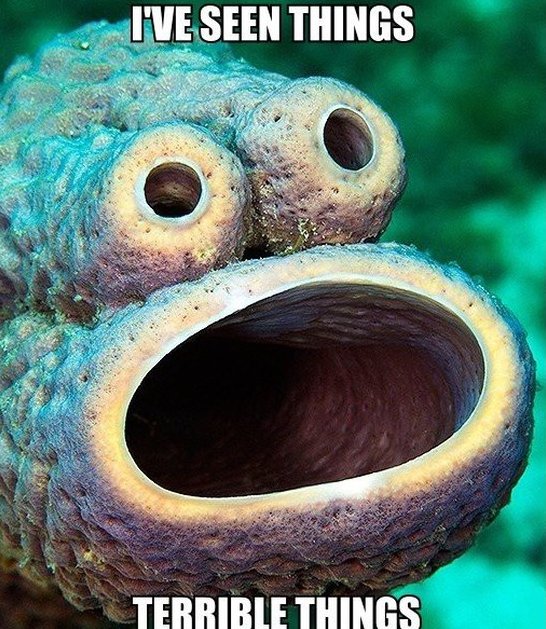If you’re the kind of science fiction or horror fan that took work off when Netflix added Twilight Zone to their offerings, Eerie might be right up your alley. Begun in 1966 by Warren Publishing, Eerie is an anthology book compiling individual stories of creeping terrors and mysterious horrors, each one introduced by Cousin Eerie, an illustrated amalgamation of Rod Serling and Alfred E. Neuman. Most, combine elements of science fiction, horror, and adventure.
By February, 1983, Eerie saw its last issue, falling victim to failing sales numbers, the departure of many of its artists, and shifts in management. The rights to reprint the 139 issues of Eerie changed hands between 2000 and 2007 before finding a home at Dark Horse.
Archival volumes of the classic issues are now being reprinted in hardcover editions, with release dates set every four months. February 1, 2017 will see the release of volume 23 which includes issues #109 to #113.
Big Shiny Robot was able to read issue #113 to give you an idea of what Eerie has to offer. Spoiler ahead.
The Manifestation: Written by Budd Lewis and Will Richardson; Illustrated by E.R. Cruz
Captain Pennell, captain of the construction ship Odysseus, awaits cosmic teleportation at the Stargate Sol-1, headed more than a trillion lightyears into space. During transport, the ship is stalled and engines inoperative. A massive alien presence appears in nearby space, threatening to destroy the vessel, the Stargate, and everyone onboard.
While Pennell, his crew, and the staff of Sol-1 fight for their very survival, they are swept up inside the alien presence and discover that the alien vessel is itself alive. The entity inside takes its human captors in turns to kill or consume what parts of them it needs until only one remains. In a final battle, the alien presence is destroyed, but its essence remains, keeping the lone human survivor alive and limbless in the emptiness of space just long enough to let him know that he has lost.
Let me give it to you straight. There are some problems with this story. The way that it’s structured, both in terms of writing and art direction make for a slightly jarring experience. There are moments when you’re not quite sure how things progressed from one point to the next, but the whole thing is redeemed in the final panel, with an ending so thoroughly disturbing it makes the bumpy journey worthwhile.

Whoever said ‘It’s not the destination, it’s the journey’ has clearly never seen a limbless man, covered in ectoplasm, floating in the void of space.
Code Name: Nova: Written by Will Richardson; Illustrated by Alfredo Alcala
Right away Code Name: Nova sticks out as a superior story. Alcala’s illustrations alone made the story more coherent and easier to follow. Though, again, there are moments when the story jerks forward and you just have to go along for the ride.
Captain John Norris, codenamed Nova, is a field officer of Mars, tasked with finding and capturing mutant terrorist on the red planet. After a nuclear war on Earth, survivors moved to the fourth planet, leaving the losing side to the ravages of radiation on Earth. Understandably, they aren’t satisfied with their dying homeworld and want a piece of the sweet, rust colored, dust pie that is Mars.
Norris is called in to investigate an unknown object orbiting Mars at 200 miles above the surface (apparently, even in the future we can’t be convinced to convert to metric units, that’s commie mutie talk!)
Norris makes his way to the object with a Mutie entourage on his tail, discovers it to be a highly advanced alien craft, and a battle for technological supremacy ensues. Norris arises the victor, only to realize in the death of his foes that they were willing to die for their cause while he has never felt that strongly about anything. As a result, he doubts that he’s on the right side of history and heads back to the surface to make things right.
The morality lesson about both sides of a conflict feeling as though they are fighting for truth and justice feels a little shoehorned and is ultimately a detriment to what otherwise might have just been a fun, brainless, story about civil unrest in space. Additionally, the biases of the time show through in the writing when at one point Captain Norris (Nova) refers to his adversaries as “Mutie wetbacks” (I feel gross even writing that, mutants are people too).

I heard what you said… dick. I have feelings!
While the art in Code Name: Nova is lightyears (hue- hue) ahead of the previous installment, it’s the literary equivalent of stale cotton candy… not that fun to consume and leaves you feeling empty.
Haxtur and the Slow Death: Written and Illustrated by Victor de la Fuente
Haxtur, a warrior in a strange land, navigates various landscapes and the peoples he encounters there. First up is the land of Mokt, the god of the slow death. Undeterred by warnings of a slow but certain demise, Haxtur determines to confront Mokt and free the peoples being held captive by him. When it becomes clear that Mokt is nothing more than a radioactive object, Haxtur kills the guards, frees the captives, and tells them to take a bath and they’ll be fine.
Next, Haxtur encounters Khut, a mad Dr. Frankenstein type who creates aberrations with the intent of correcting what he perceives as the mistakes of the gods in creating his own broken form. Khut makes clear his intent to steal Haxtur’s body, placing his own brain inside. Haxtur, as is to be expected, is having none of Khut’s nonsense and just peaces right the hell out of there.
Getting a feel for the story of Haxtur overall is difficult as this story is not self-contained, but instead told in sections over multiple issues. The people he encounters seem to be prisoners to bizarre circumstance only because of their unwillingness to just say no. Haxtur is regarded a hero for his ability to claim reasonable rights for himself. It’s fun to read if only for his nonchalant attitude to perceived peril.
The hardcover editions of Eerie come in at $49.99 and might be a worthwhile investment if you’re interested in bitesize bits of 60’s and 70’s era sci-fi along the lines of diet Twilight Zone. Volume 23 contains 279 pages comprising five issues and more than fifteen individual stories. In stores and online February 1.